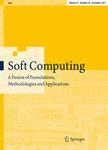版权所有:内蒙古大学图书馆 技术提供:维普资讯• 智图
内蒙古自治区呼和浩特市赛罕区大学西街235号 邮编: 010021

作者机构:Univ Complutense Madrid Parallel Architectures & Bioinspired Algorithms P Madrid Spain Univ Nottingham Sch Comp Sci Interdisciplinary Comp & Complex Syst ICOS Res Gr Nottingham NG7 2RD England
出 版 物:《SOFT COMPUTING》 (Soft Comput.)
年 卷 期:2013年第17卷第7期
页 面:1209-1225页
核心收录:
学科分类:08[工学] 0812[工学-计算机科学与技术(可授工学、理学学位)]
基 金:UK EPSRC [EP/H010432/1] Spanish Government Avanza Competitividad I+D+I [TSI-020100-2010-962, Iyelmo INNPACTO-IPT-2011-1198-430000] Direccion General de Politica Universitaria, Ministerio de Educacion, Cultura y Deporte [Orden ECD /3628/2011] Spanish Government [TIN 2008-00508] MEC CONSOLIDER [CSD00C-07-20811] EPSRC [EP/H010432/1] Funding Source: UKRI
主 题:Parallel Evolutionary Algorithm Island model Problem structure
摘 要:In the context of Parallel Evolutionary Algorithms, it has been shown that different population structures induce different search performances. Nevertheless, no work has shown a clear cut evidence that there is a correlation between the solver s population structure and the problem s network structure. In this work, we verify this correlation performing a clear and systematic analysis of a large set of population structures (based on the well known beta-graphs and NK-landscape problems. Furthermore, we go beyond our findings in these idealised experiments by analysing the performance of variable-topology EAs on a dynamic real-world problem, the Multi-Skills Call Centre.